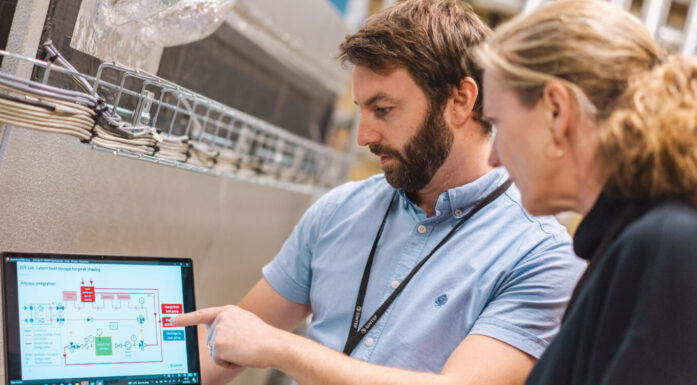From wood chips to alcohol in hours
New approach makes biofuel from wood faster, more economical.
Until now, it has taken weeks to make biofuel from trees. This slow pace has been a bottleneck for companies that want to make money from the method. Researchers have now found a way to shorten the process to some hours.
“The time that we use food stock to make biofuel to power a car may soon be over. Currently, maize and sugar cane are used to produce biofuel,” says Finn Lillelund Aachmann, a biotechnology researcher at NTNU. He thinks that the desire for people to have environmentally friendly fuel should not be at the expense of food. But turning trees – wood chips and sawdust – into biofuel in hours promises new profitability for the Norwegian forestry and wood-processing industries, now that the demand for paper is on the decline.
Tiny wood chip machine
The biggest challenge in making biofuel from wood to date has been that it is a time-consuming process. In fact, it can take several weeks to make biofuel for cars. This slow transformation of wood chips into ethanol has been a bottleneck for companies that want to make money from the process. With a new super enzyme on their side, the process can be completed in hours. The super enzyme works like a tiny wood machine that scratches up the surface of the wood so that other enzymes can gain access and break the hard surface down into sugar. The enzyme quite simply shoots holes into the wood surface with the help of oxygen bullets.
A need for deeper understanding
This super enzyme was discovered by researchers at the University of Life Sciences (UMB) in Norway. The discovery was published in the international journal Science in 2010. In 2011, the world’s largest enzyme producer, Novozymes, bought the enzyme technology patent from UMB. But the company needed a deeper understanding of how the enzyme works.
NTNU’s Aachmann has used NMR technology to learn more about the super enzyme. This technology involves the use of nuclear magnetic resonance, which permits the detailed study of each nucleus of a molecule. Molecules are the smallest components of all biological and chemical processes. NMR technology is used to determine the molecular structure of anything from organic compounds to proteins, and the technology is the basis for a whole range of disciplines in both research and industry.
“NMR technology gives us a new understanding of the super enzyme, which makes it possible for us to improve the use of the enzyme even more. This is of great importance if we are to create a more financially profitable and efficient process for producers,” says Aachmann.
Strengthened cooperation
Norway’s three largest universities are now in the process of strengthening their cooperation on research that relies on NMR technology. The initiative is of national importance, and will contribute significantly in helping the Norwegian government reach its goals over the next few decades for biotechnology, nanotechnology and bio prospecting.
The Research Council of Norway has funded two large new programmes, BIOTEK2021 (Biotechnology for Innovation) and NANO2021 (Programme on Nanotechnology and Advanced Materials) to support the government’s goals. Both programmes will strengthen the interaction between research and industry in such a way that technology-based knowledge can be used for sustainable value creation.





